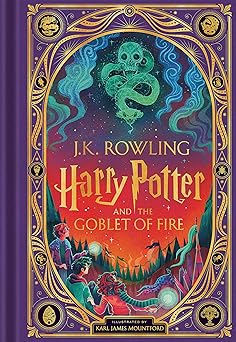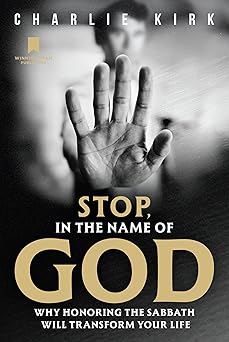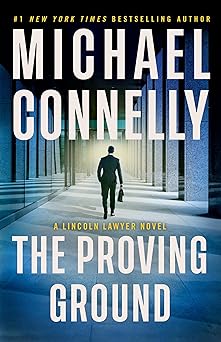
Introduction and Context
Save America, published on September 3, 2024, is a visually driven political book authored by Donald J. Trump through Winning Team Publishing. The book offers a retrospective look at Trump’s presidency, blending photographs, short commentaries, and political messages that highlight his perspective on leadership, legacy, and the future of the United States. Rather than being a traditional memoir or policy discussion, Save America functions as a curated photographic chronicle and political statement.
The book’s release came at a time when Trump’s political career was again at the forefront of national discussion, making this publication both a reflection of his time in office and a continuation of his effort to shape public perception of his tenure.
Structure and Presentation
Save America spans hundreds of pages filled with full-color images, many of which occupy entire spreads. Text is limited and typically presented as short captions or bold statements. The photographs capture Trump in various settings—at rallies, official meetings, and public appearances—each chosen to reinforce his image as a strong and unrelenting leader.
The design is polished and high-quality, giving the book a coffee-table style appeal. However, it has been criticized for its lack of contextual information. Many images lack captions identifying dates, locations, or individuals, leaving the reader with a visual narrative that feels disconnected from historical detail. The absence of a table of contents or index also makes it difficult to navigate.
Overall, the structure favors spectacle over substance. The repetition of crowd scenes, triumphant gestures, and photo opportunities gives the impression that the book was designed more to inspire loyalty and nostalgia than to inform or analyze.
Tone and Rhetorical Style
The text of Save America is written in Trump’s signature style—direct, emphatic, and often dramatic. The captions and statements use capital letters, short sentences, and punchy phrasing to emphasize key points. The book mixes patriotic declarations with attacks on political opponents, the media, and what Trump calls the “establishment.”
Rather than developing complex arguments, the commentary relies on assertion and symbolism. Trump’s narrative portrays himself as a defender of American values, a victim of political persecution, and a man standing alone against corruption and deceit. His words often mirror his campaign rhetoric, focusing on strength, nationalism, and defiance.
There are also moments where the tone turns conspiratorial or personal, referencing political rivals and critics in provocative ways. This approach will appeal to readers who admire Trump’s combative style but may alienate those seeking objective reflection or balanced commentary.
Major Themes
1. Leadership and Legacy
The book positions Trump as a transformational figure whose presidency changed the course of the nation. The imagery reinforces his personal influence on the direction of American politics, depicting him as central to every event and decision.
2. Patriotism and National Pride
Patriotic themes run throughout Save America. The American flag, cheering crowds, and military symbols appear repeatedly. The message is clear: Trump represents a return to traditional American values and pride.
3. Conflict and Resistance
Trump frequently presents himself as a victim of unfair attacks by the media, political opponents, and powerful institutions. The book uses this theme to frame his political struggles as proof of his courage and righteousness.
4. International Power and Diplomacy
Photographs of Trump meeting foreign leaders emphasize his role on the world stage. The images project confidence and authority, suggesting that his presidency restored respect for American power abroad.
5. The People’s Movement
Crowd scenes are among the most frequent images in Save America. They symbolize Trump’s connection with ordinary Americans and serve as visual evidence of his continued popularity and influence.
Strengths
Save America succeeds in creating a strong visual and emotional impact. The layout, printing, and photography are high quality, giving the book an impressive aesthetic presence. For supporters and collectors, it functions as a symbol of identity and loyalty. Its simplicity and emphasis on bold imagery make it easily accessible, even for readers uninterested in long-form political writing.
The book also demonstrates Trump’s understanding of modern political communication. By relying on visuals rather than text, it captures attention quickly and conveys messages through emotion rather than argument. In an era dominated by social media and image-driven politics, this strategy is highly effective.
Weaknesses
The book’s greatest weakness is its lack of depth. It provides no detailed analysis of policies, no discussion of controversies, and no introspection. The narrative is one-sided, focusing exclusively on triumphs while omitting context or criticism. Readers seeking genuine insight into the decisions, challenges, or complexities of Trump’s presidency will find little substance.
The repetition of similar images can also make the book feel monotonous. Many pages display Trump in nearly identical poses at rallies or events, reinforcing the same message without adding new perspective. The absence of factual explanation or clear chronology makes it difficult to view Save America as a serious historical resource.
Additionally, some of the claims and captions rely heavily on personal opinion and rhetoric rather than verifiable information. This further positions the book as a work of promotion rather than reflection.
Reception and Public Response
Upon release, Save America achieved strong sales, particularly among Trump’s supporters. It quickly became a best-selling political title, fueled by enthusiasm from his base and collectors of presidential memorabilia. Reviews from mainstream critics, however, were generally unfavorable. Many described it as more of a campaign piece than a genuine work of literature or history.
Among admirers, the book was praised for its visual appeal and for offering a proud, unapologetic defense of Trump’s record. Among detractors, it was criticized for promoting misinformation, lacking balance, and serving as a vehicle for political messaging rather than documentation.
Historical Value
As a historical artifact, Save America provides insight into how Trump wishes his presidency to be remembered. It captures the image he wants to present to his followers—strong, defiant, and larger than life. From a scholarly perspective, the book is useful not for its factual content but as a primary source for understanding modern political branding and image-making.
Future historians may study Save America as an example of how 21st-century leaders used media and visual storytelling to shape their legacy. It represents the intersection of politics, personality, and publicity in the digital age.
Final Assessment
Save America is a striking but polarizing work. It offers a bold and emotional portrayal of Donald Trump’s vision of himself and his time in office. As a visual document, it is impressive and impactful. As a written account, it lacks depth, objectivity, and critical analysis.
For Trump supporters and collectors, it serves as a valuable keepsake and a symbol of shared identity. For neutral or critical readers, it may feel more like political propaganda than serious reflection. Ultimately, Save America succeeds on its own terms—it captures attention, stirs emotion, and reinforces Trump’s personal brand—but it does not provide the kind of insight or balance that would make it a meaningful contribution to political literature.
In conclusion, Save America is not a book designed to persuade skeptics or engage in policy debate. It is a visual celebration of one man’s image and message, intended for those who already believe in his vision. As such, it stands as both a striking example of modern political media and a revealing portrait of Donald Trump’s enduring influence on American culture.
Get Save America By Donald Trump On Amazon!









